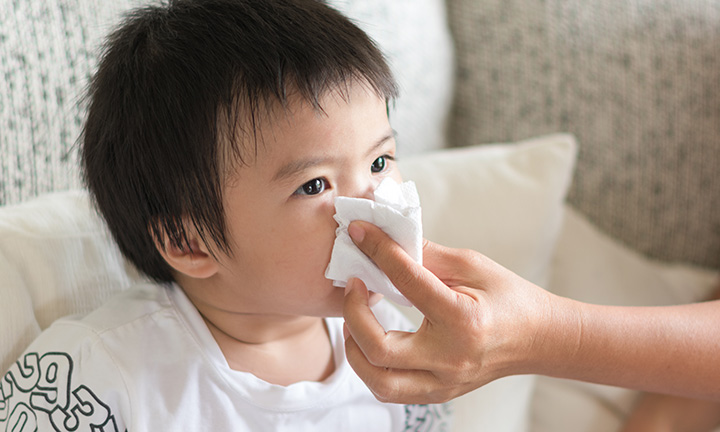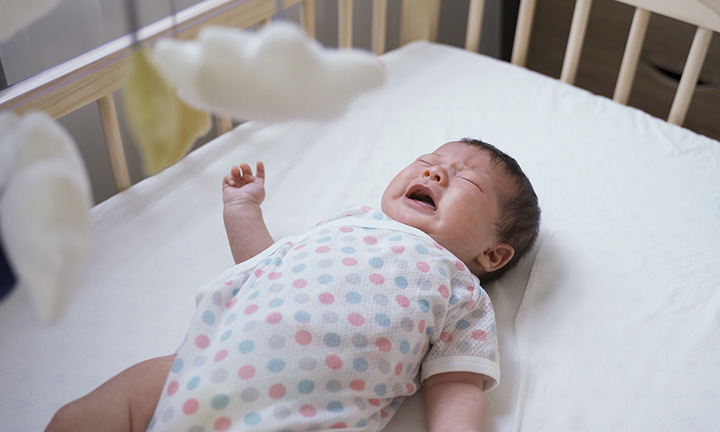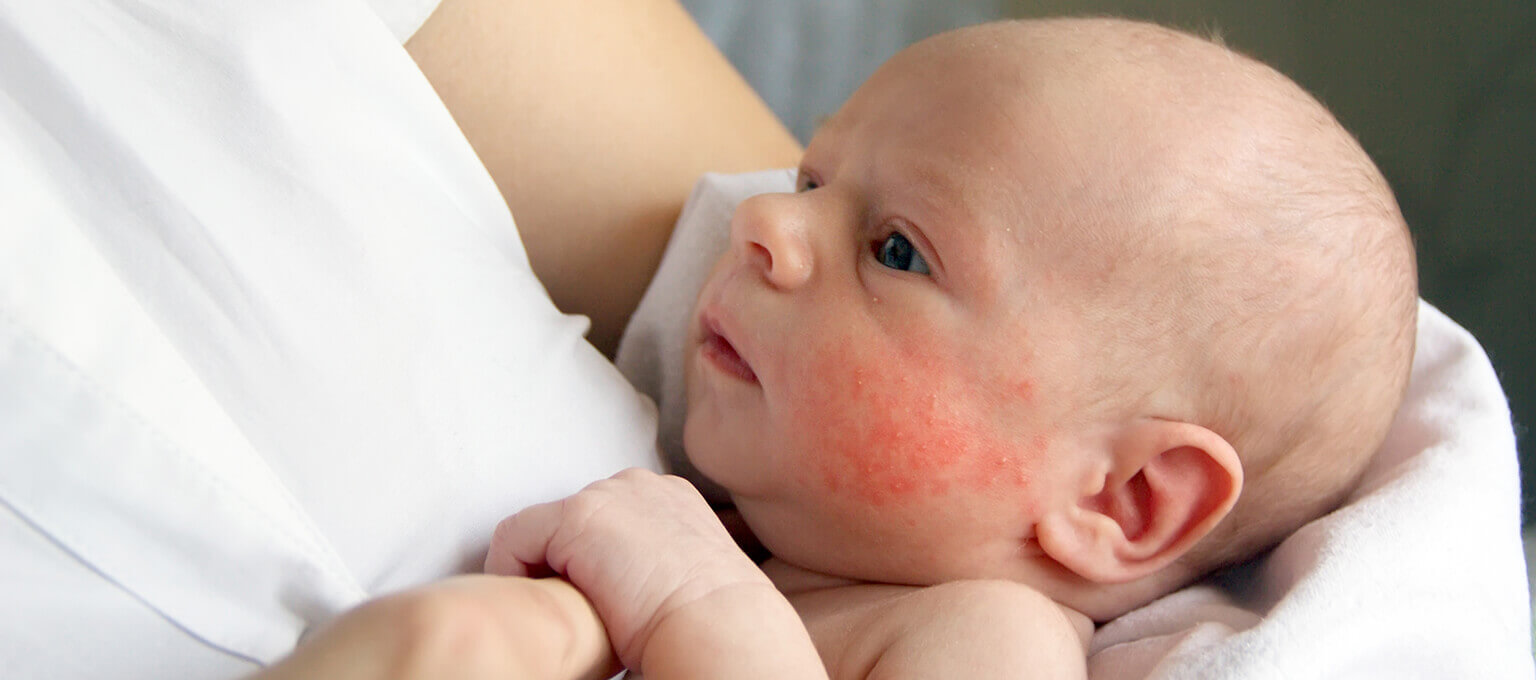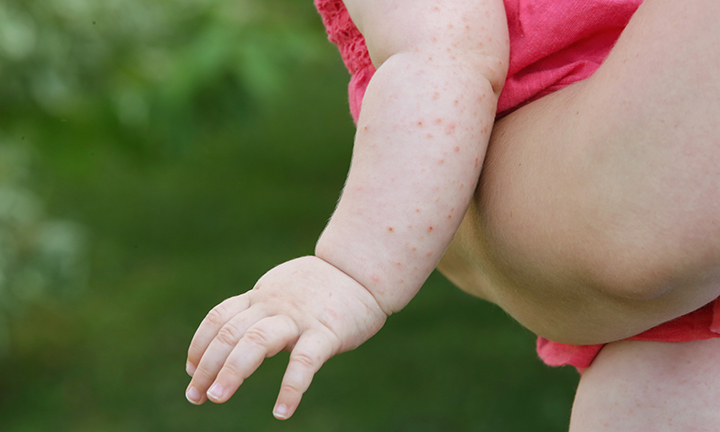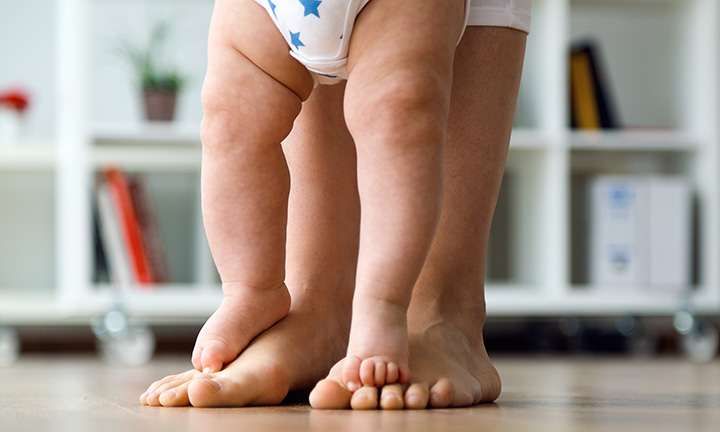
Ultimate First-Aid Kit Checklist For Babies
Having a basic first-aid kit at home for your growing family can be helpful when dealing with those minor cuts and grazes, and those little accidents and illnesses that can happen from time to time. Find out what supplies to include in a first-aid box for your baby, as well as tips for safely storing it and keeping it replenished so you never run out when you need something.
What Is a Baby First-Aid Kit?
A first-aid kit is a bag or a box filled with essentials you might need in case of a mild illness or lesser emergencies such as minor cuts, burns or scrapes. A paediatric or baby first-aid kit is essentially like a regular first-aid kit but with a few extras specifically for babies.
Whether you have a newborn, older baby or a toddler, make sure the contents of your first-aid kit are tailored to your little one’s needs.
Supplies to Add to Your Baby First-Aid Kit
Here are some basic supplies and medicines you may like to add to your baby’s first-aid box. Many of these items can work for your entire family, while others are more appropriate for your infant. Feel free to add more items as you see fit.
First aid manual. Having a guide to basic first aid on hand can be useful as a memory jogger, especially if you’re feeling a little panicky or stressed when you’re trying to administer treatment to your crying child. Ask at your pharmacy about where you can get one of these booklets, or you can look around and buy one online.
Sticking plasters. These are available in a wide variety of shapes and sizes to cover all sorts of minor cuts, scrapes or blisters. It’s a good idea to have a selection on hand so you have the size and shape you need on hand. A plaster with a colourful pattern or a favourite cartoon character on it could help cheer up your tearful child after a fall or other accident.
Bandages. Crepe bandages can be used for securing a dressing over a larger cut or graze or for a little extra support. Tubular bandages are great for supporting a strained wrist, ankle or other joint.
Adhesive tape. Medical adhesive tape is useful for holding a dressing in place.
Sterile gauze dressings. Sometimes a plaster just isn’t big enough. For larger cuts or scrapes you might need a sterile gauze pad, held in place with a crepe bandage or some adhesive tape.
Scissors. A small pair of scissors is a must for cutting plasters, tape and bandages to the right size. They can also be used for cutting clothes to take them off should you need to. Blunt-nosed scissors are the safest for this, especially if you’re using them close to your little one’s skin.
Tweezers. A pair of tweezers can be useful for removing splinters or thorns from your child’s skin.
Antiseptic wipes. Having a few of these in your first-aid box can make cleaning cuts and grazes to help prevent infection. Always use a fresh wipe and clean gently outwards from the centre of the wound.
Ice packs or gel packs. It’s best to keep these in the fridge rather than in the first-aid box itself, so they’re always ready to soothe bumps and bruises and reduce swelling. A packet of frozen peas from the freezer will also do the trick; but wrap it in a clean tea towel first to prevent ‘cold burns’ caused by direct skin contact.
Eyebath and sterile saline solution. A useful addition to any first-aid box, this can be used to safely flush dust or other foreign bodies out of your child’s eye.
Thermometer. A thermometer is an essential item in your first-aid kit. You’ll need it to take your baby’s temperature if you suspect he or she has a fever. There are several types of thermometers, including:
Digital (underarm). These days underarm thermometers are usually digital, making them fast and accurate, and safer and easier to use than the old glass-type thermometers. Experts recommend using a digital thermometer under the arm as the most accurate way of taking your child’s temperature at home.
Ear. Thermometers that you put in your baby’s ear are also known as tympanic thermometers. They can be more expensive than a regular underarm thermometer and have to be placed correctly in the ear to get an accurate reading. This is why it’s important to read the manufacturer’s instructions carefully before using them.
Forehead. Some thermometers use infrared light to measure your baby’s temperature on the forehead, either from a small distance away or by being held against the skin. This kind can be useful for checking your baby’s temperature at night without waking him or her up. Keep in mind, however, that they can be sensitive to changes in room temperature and may give a false reading if your child’s forehead is sweaty or covered in lotion.
Strip-type thermometers. These are just a heat-sensitive plastic strip that you hold against your baby’s forehead. Unlike electronic forehead thermometers – which use infra-red light to measure the temperature of blood in a vein below the skin – strip-type thermometers only measure skin temperature and are not recommended as an accurate way of taking your child’s temperature.
Glass. Traditional glass thermometers have mostly been superseded by safer, easier-to-read digital thermometers. If you do still have the old kind of glass thermometer, consider changing it for a digital one. It’s especially important to make sure your glass thermometer isn’t an old mercury-containing one. Mercury is very poisonous and can easily escape if the thermometer breaks. Ask your local waste disposal centre how to safely dispose of a mercury thermometer. Get medical help immediately if you think your baby has come into contact with mercury from an old thermometer.

Medicines
You may also wish to add some basic medicines to your baby’s first aid kit. Make sure to check with your doctor which medicines are OK to give your baby. Keep in mind that doses and suitable medicines may change as your baby grows older, so always keep the patient information leaflet, and read it before giving any medicine to your child. The following are some medicines you might consider keeping in your baby first-aid kit or medicine cabinet, keeping in mind that it’s always safest to check with your doctor before giving your baby medicine, even if it’s a medicine you’ve given at another time:
What to Use as a First Aid Kit
You can buy a ready-made first-aid box or simply repurpose another box or container. If you aren’t using a specially made first-aid box – which should be green with a white cross – mark the box clearly with the words ‘First Aid’. The best kind of first-aid box is waterproof and easy to carry – it’s easier to take the first-aid kit to your child than the other way round. Your first-aid box should be tall enough to hold bottles of lotion, and ideally it should have a childproof locking mechanism. Keeping all your medical supplies in one place and well organised ensures you won’t be searching for the items in an emergency and makes it easier to see when you need to stock up on certain items.
Where to Buy a Baby First-Aid Kit
You can buy a pre-stocked first-aid box, as well as the individual items that go into one, at pharmacies, supermarkets and many other shops and online retailers. Ready-made first-aid kits come filled with the essentials, but you might find it’s better to put one together yourself or buy a basic kit and then add the extra things you need for your baby. This way, you can assemble exactly what you need for your baby, which may be different from what a generic shop-bought kit contains.
Restocking Your First-Aid Kit
Don’t forget to replace items that you use from your first-aid kit, because you never know when you’ll need them next. The medicines and dressings in your first-aid box will all have different use-by dates, so it’s important to check for expired items from time to time, discard them and replace them with new ones. Take any out-of-date medicines to your local pharmacy, where the staff will be able to dispose of them safely for you.
Where to Keep Your Baby First-Aid Kit
For your child’s safety, make sure the first-aid kit is kept out of his or her reach. You don’t want your baby, toddler or young child playing with sharp scissors or getting hold of medicine. This is one of the things you need to pay attention to when baby proofing your home, so use this time to think about a safe spot for your first-aid kit as well. It’s sensible to make sure every adult and adolescent in your household – and anyone else who cares for your baby in your home, like a babysitter or grandparent – knows where the first-aid box is kept and how to use the items in it.
When to Get Medical Help
Minor injuries can often be treated at home with a first-aid kit, but in more serious cases you may need to seek medical attention for your child as well. If you think your baby might be badly hurt or if you aren’t sure how to give first aid to your child, call 111 or your doctor for advice on what to do.
Call 999 straight away if your little one
is unconscious
seems dazed or confused
has an uncontrollable fit or seizure
has a severe allergic reaction
is severely burned or scalded
has copious bleeding that can’t be stopped
or, if for any reason you suspect your little one needs emergency medical care.
The Bottom Line
Putting together a first-aid kit for your baby is an easy step that can give you lots of peace of mind. Knowing that you have supplies on hand should a tiny cut happen or should you need to check your baby’s temperature, gives you one less thing to worry about in those moments when your focus will be administering first aid or on caring for your sick little one. Of course, the less you need to use it the better, but illnesses and accidents can happen despite your best efforts to avoid them. Having a first-aid kit at the ready just in case could make all the difference in an emergency.
Read more about Baby
Related Articles
Join Pampers Club and get:





